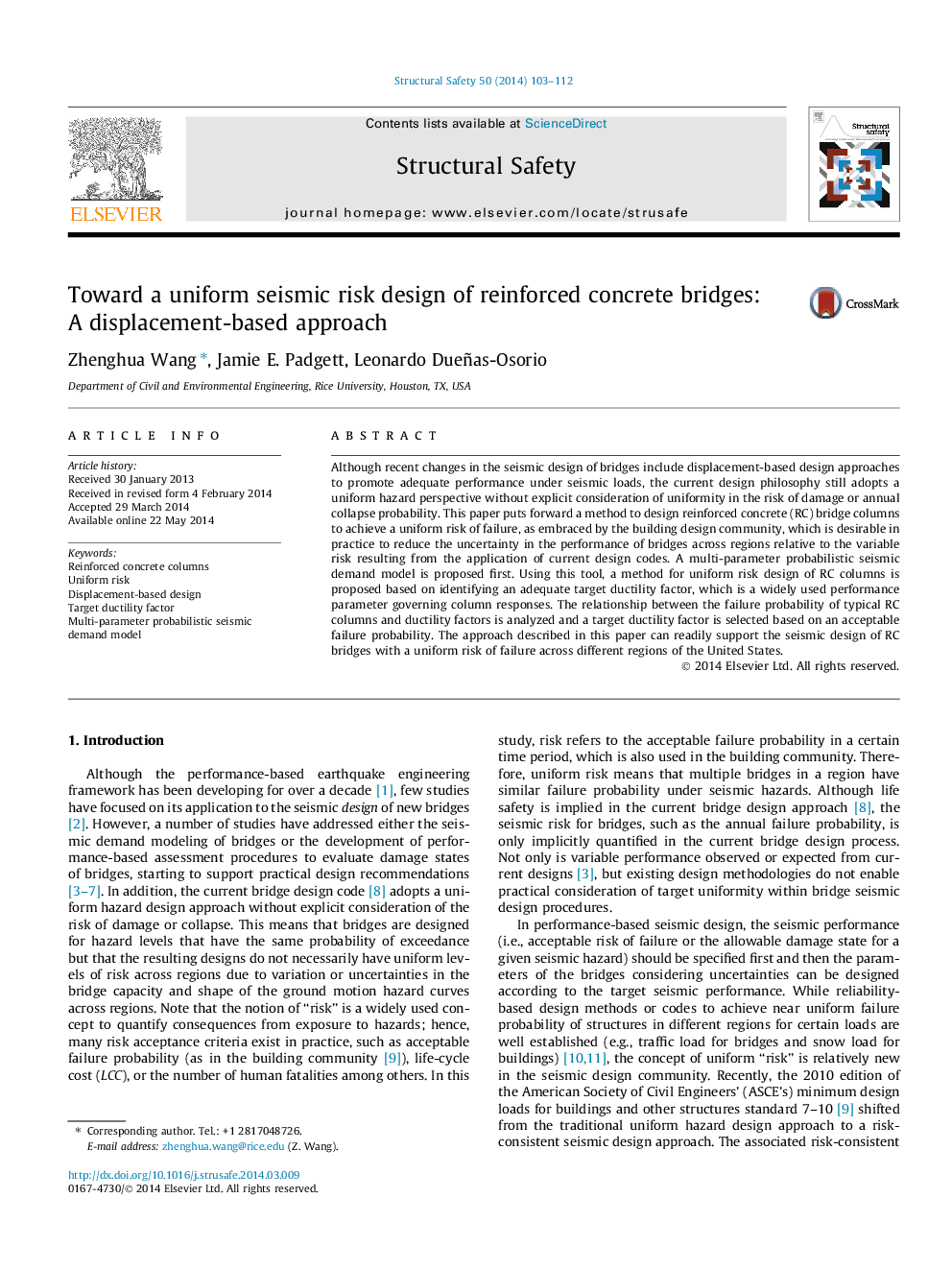| Article ID | Journal | Published Year | Pages | File Type |
|---|---|---|---|---|
| 307542 | Structural Safety | 2014 | 10 Pages |
•Transform current uniform hazard design philosophy to uniform risk design of bridges.•Identify design parameters that strongly influence the seismic response of reinforced concrete (RC) columns.•Propose a new multi-parameter probabilistic seismic demand model.•Put forward a target-ductility direct displacement-based design method for the uniform risk design of RC bridges.•Analyze the influence of different design parameters on the seismic risk.
Although recent changes in the seismic design of bridges include displacement-based design approaches to promote adequate performance under seismic loads, the current design philosophy still adopts a uniform hazard perspective without explicit consideration of uniformity in the risk of damage or annual collapse probability. This paper puts forward a method to design reinforced concrete (RC) bridge columns to achieve a uniform risk of failure, as embraced by the building design community, which is desirable in practice to reduce the uncertainty in the performance of bridges across regions relative to the variable risk resulting from the application of current design codes. A multi-parameter probabilistic seismic demand model is proposed first. Using this tool, a method for uniform risk design of RC columns is proposed based on identifying an adequate target ductility factor, which is a widely used performance parameter governing column responses. The relationship between the failure probability of typical RC columns and ductility factors is analyzed and a target ductility factor is selected based on an acceptable failure probability. The approach described in this paper can readily support the seismic design of RC bridges with a uniform risk of failure across different regions of the United States.
